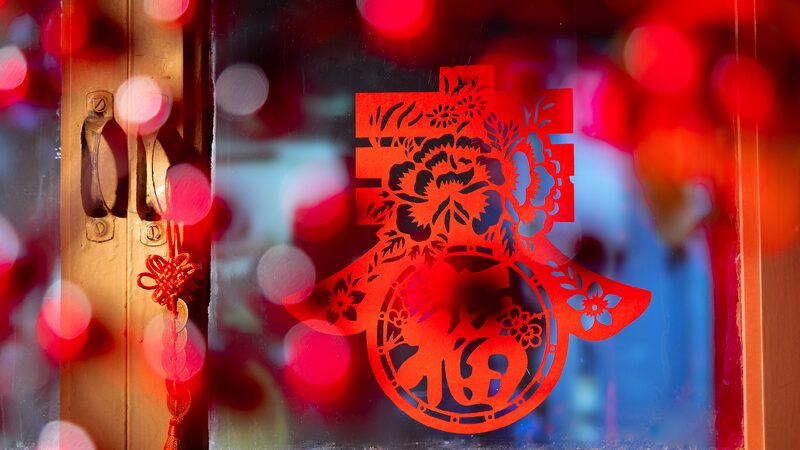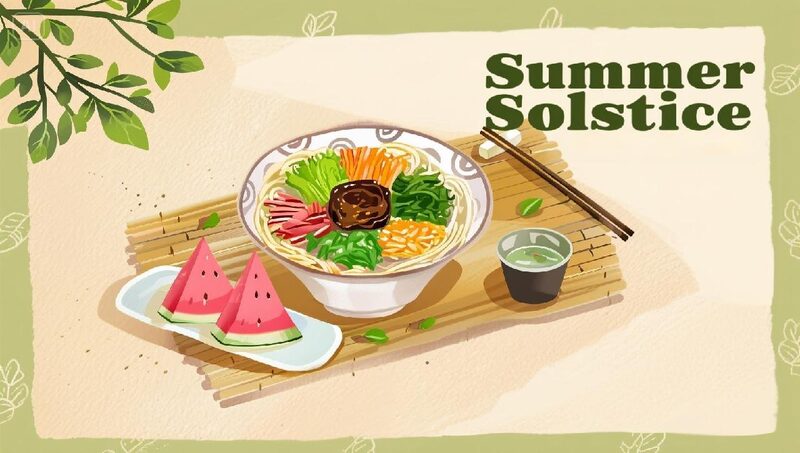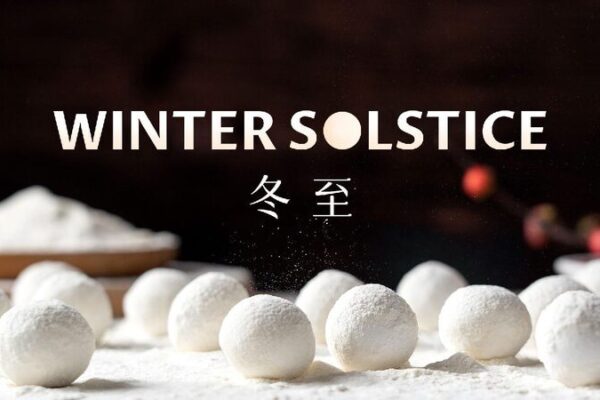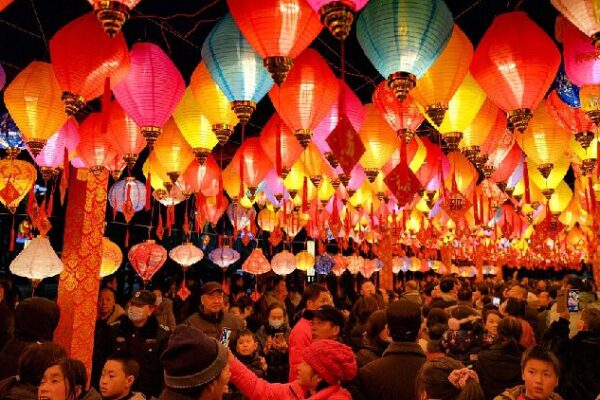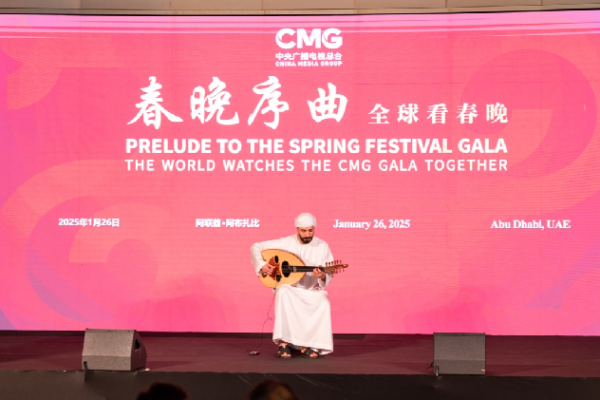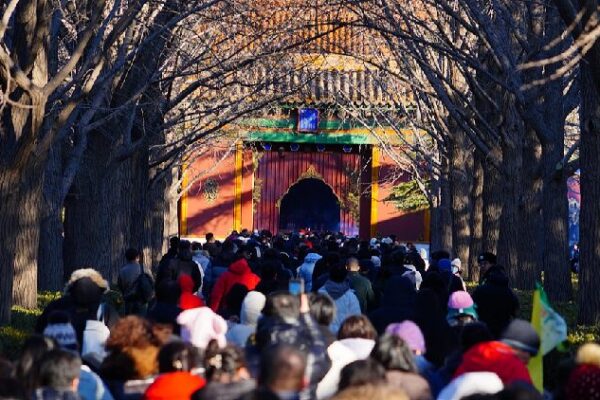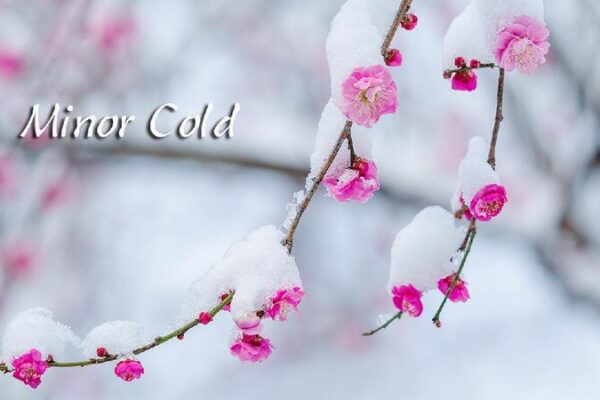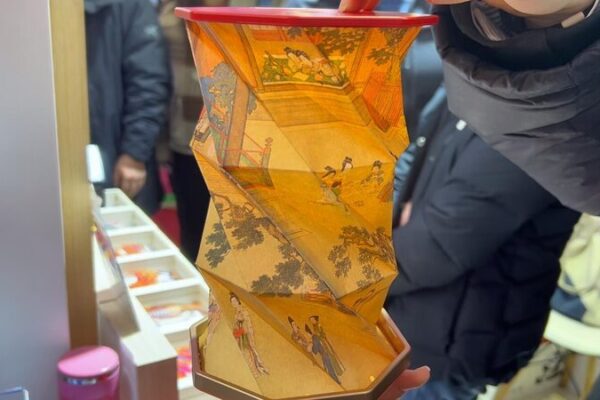The journey from the Winter Solstice to the Lantern Festival unfolds a vibrant tapestry of traditions that reflect the deep sense of ritual among the Chinese people. Rooted in ancient customs, this festive period bridges the cold of winter with the promise of spring renewal.
Winter Solstice: The Prelude to Renewal
The Winter Solstice, marking the shortest day and longest night of the year, signals the return of longer days and the coming of spring. In ancient times, it was considered as significant as the New Year itself, with the saying, “Winter Solstice is as great as the New Year” highlighting its importance.
A traditional practice during this time is “counting the nines,” which divides the 81 days from the Winter Solstice to spring into nine sets of nine days. People would use the Nine-Nines Disperse the Cold Chart to mark each day, creatively enduring the cold and looking forward to warmer days as each stroke filled the chart, symbolizing the gradual transition from winter to spring.
In Songyuan, Jilin Province, the ice-covered Chagan Lake comes alive with centuries-old winter fishing traditions dating back to the Liao and Jin dynasties. The winter fishing season begins with a solemn ceremony to honor nature’s abundance and wish for a bountiful catch. Fishermen drill holes in the ice, set nets, and use horse-drawn winches to haul in their catch. This awe-inspiring spectacle not only sustains the local community but also embodies hopes for prosperity in the coming year.
Laba Festival: Gratitude and Harmony
Celebrated on the eighth day of the twelfth month of the traditional Chinese calendar, the Laba Festival is marked by eating Laba porridge. This tradition, dating back to the Song Dynasty, reflects people’s aspirations for joy and prosperity. The porridge is made by simmering rice, beans, peanuts, red dates, longans, raisins, and other ingredients, sweetened with sugar. Enjoying a bowl not only warms the body but also evokes deep familial affection and the festive joy of the approaching New Year.
At Lingyin Temple in Hangzhou, Zhejiang Province, preparations for Laba porridge begin a week in advance. Using large steam cauldrons, the staff works around the clock to produce thousands of servings daily, which are distributed to locals for free. This heartwarming tradition promotes kindness, gratitude, and community harmony.
Little New Year: Sending off the Kitchen God
Little New Year, also known as the Festival of the Kitchen God, occurs about a week before Chinese New Year. It’s a pivotal moment for household renewal and spiritual preparation. Families honor the Kitchen God and thoroughly clean their homes to bid farewell to the old and welcome the new, setting the stage for the New Year. In northern China, it’s celebrated on the 23rd day of the twelfth month, while in the south, it’s on the 24th day.
Chinese New Year’s Eve and Beyond: A Nation in Celebration
The days leading up to Chinese New Year are filled with vibrant preparations. Markets bustle with activity as people shop for flowers, lanterns, couplets, food, and festive decorations. In Guangdong Province, strolling through the Spring Festival flower markets is a beloved tradition dating back to the Ming Dynasty, showcasing the season’s beauty and anticipation.
In the eastern part of Shandong Province, celebrating the Spring Festival with decorative steamed buns is a cherished tradition. Made from flour, these buns are crafted into vivid shapes like lifelike figures, animals, and flowers, symbolizing wishes for a prosperous year ahead.
On New Year’s Eve, families reunite for a festive dinner, symbolizing harmony and togetherness. Customs such as hanging spring couplets, setting off firecrackers, and enjoying fireworks add to the joyous atmosphere. Traditional temple fairs are held across the country, where people enjoy lion dances, dragon dances, and various folk arts, fully embracing the festive joy.
Lantern Festival: Illuminating the Year Ahead
The Lantern Festival marks the conclusion of the Chinese New Year celebrations. Lantern displays, dragon dances, and the enjoyment of sweet rice dumplings, known as tangyuan, create a magical ambiance. In Dachanglong Village in Puning, Guangdong Province, lantern parades are held, with thousands of villagers parading with lanterns, blending drumbeats and cheers in a vibrant celebration of prosperity and harmony.
In Yueqing, Zhejiang Province, Jewelry Dragon parades are a highlight. The Jewelry Dragon is a unique type of dragon lantern modeled after a fishing boat, adorned with multi-tiered pavilions housing hundreds of figurines that move through intricate mechanisms. With over 400 years of history, these parades embody the local people’s hopes for prosperity, harmony, and abundant harvests in the coming year.
A Celebration of Renewal and Hope
From the solemnity of the Winter Solstice to the brilliance of the Lantern Festival, these traditions embody the warmth, joy, and aspirations of the Chinese New Year. They celebrate renewal, community, and the enduring spirit of hope. Exploring these customs reveals not only their beauty but also the shared hopes they inspire for a brighter future.
Reference(s):
From Winter Solstice to Lantern Festival: Chinese New Year rituals
cgtn.com
